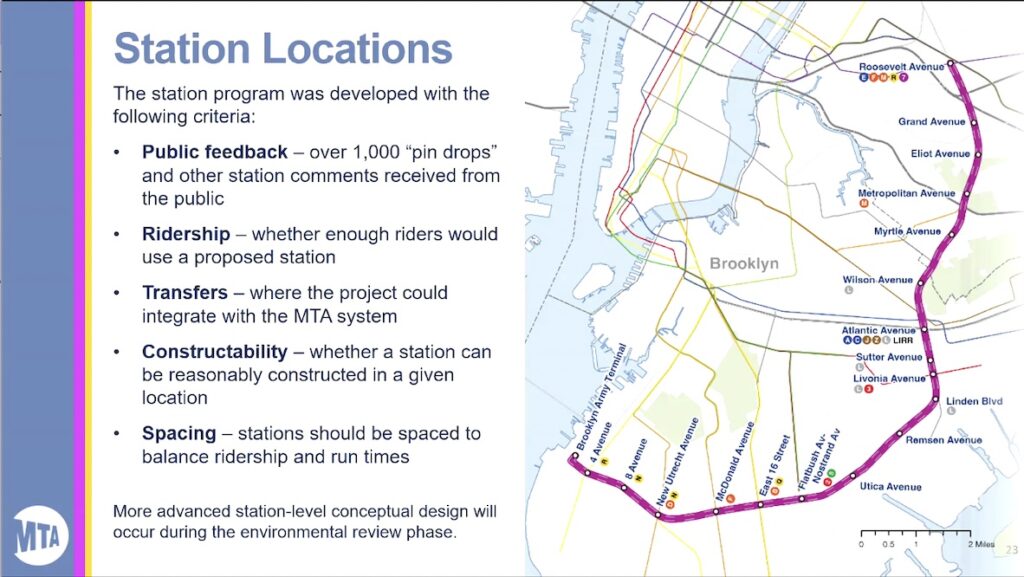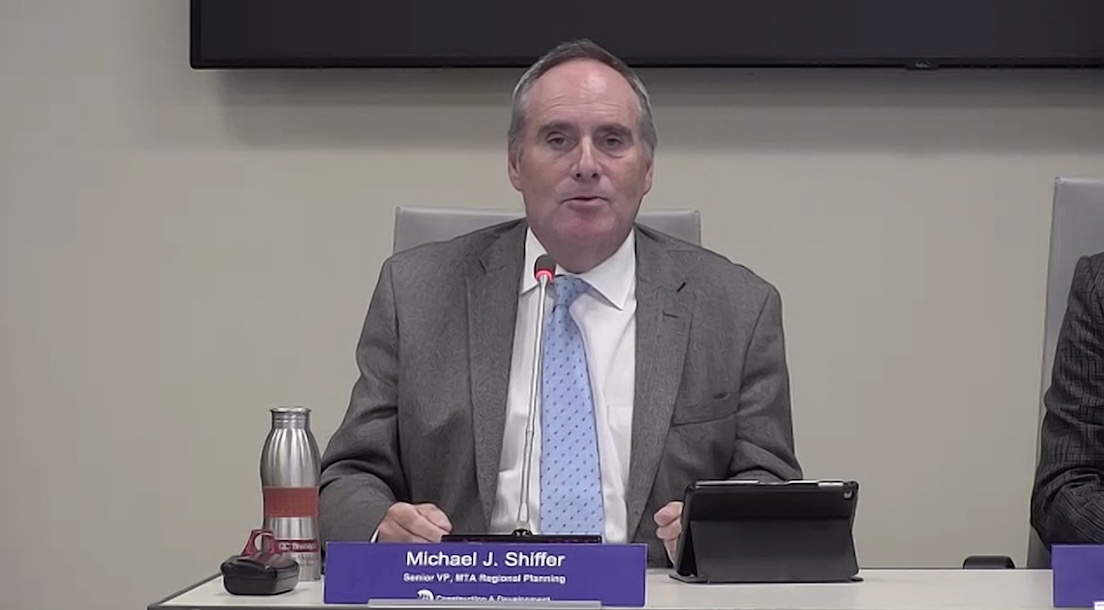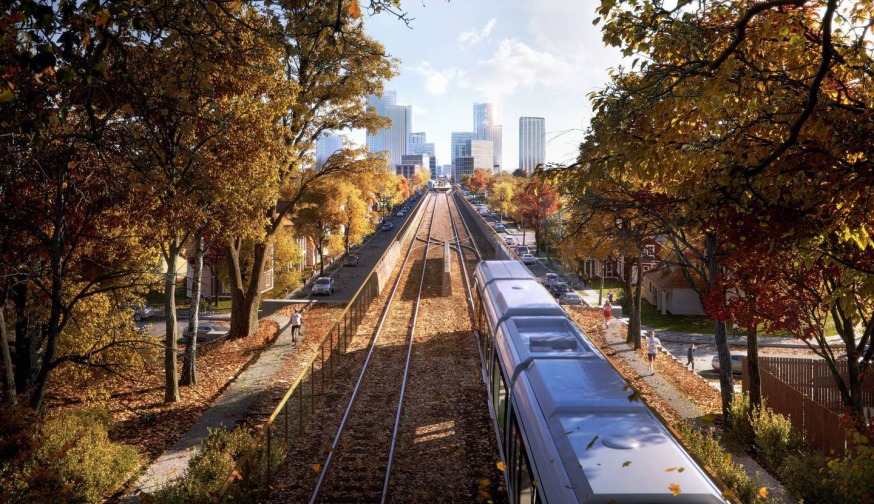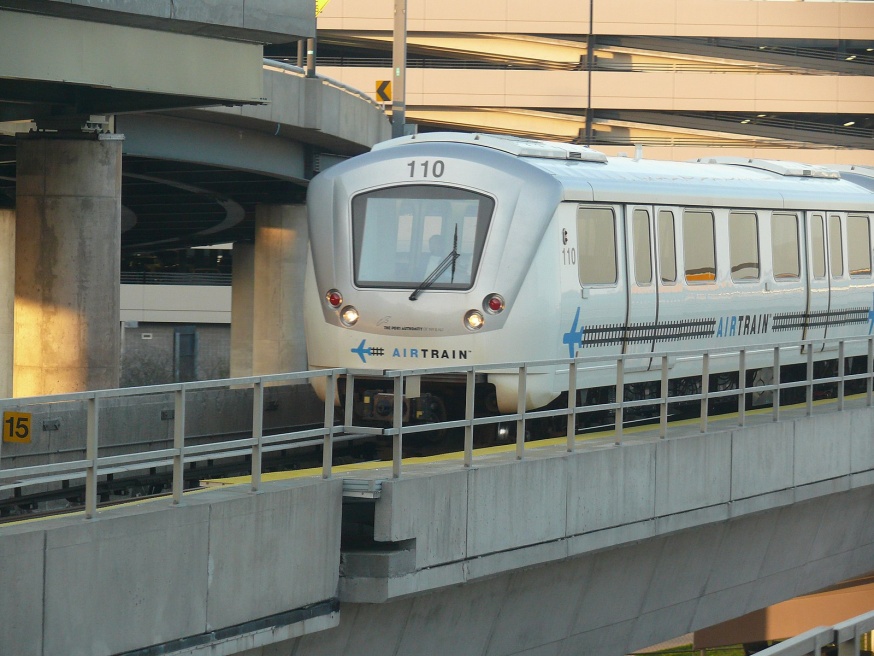MTA Announces Updates on Interborough Express

MTA senior vice president of regional planning Michael Shiffer at the town hall event.
By Carmo Moniz | news@queensledger.com
The Metropolitan Transit Authority recently shared an update on its proposed Interborough Express, a train line that will run between Jackson Heights and Bay Ridge.
While the project is still in its early stages, MTA officials explained the train line’s current status and next steps in a town hall this past Wednesday.
The last update on the $5.5 billion project was in January, when the MTA decided on a light rail system for the line. MTA senior vice president of regional planning Michael Shiffer said that it could still be years before the agency breaks ground on the project at the meeting.
“We’re still very early in this process,” Shiffer said. “I don’t want to leave you with a sense that this thing is going to be done within a year or two, it’s going to take a while.”
The project will remain eligible for federal funding by undergoing an environmental review, which takes two years to complete, but the government could still decide against advancing it after the review is finished. Shiffer said the project’s advancement is also dependent on the space available in the MTA’s 2025-29 Capital Plan.
With the light rail option, the trip from one end of the line to the other is estimated to take around 39 minutes. The line could operate with as few as five minutes between trains, according to Shiffer.

A graphic from the MTA’s presentation.
The infrastructure for the train line already partially exists, and had been used to carry passengers until it was designated for freight-only use in 1924. While some of the infrastructure for the project is already in place due to the old line, new stations, tracks and other modifications will need to be added. Among these changes are 45 bridges that need to be built.
Shiffer said that the MTA has asked the public for their input on where the stations should be, and has seen more than 1,000 people make suggestions for station locations. There are currently 19 proposed stations, including at Brooklyn Army Terminal, Atlantic Avenue and Roosevelt Avenue stations, but Shiffer said these could change as the project develops.
“The early sense was that this really hits the mark on so many of these targets that it certainly got the attention of the public, it’s had the attention of the public for quite some time,” Shiffer said. “The governor, as well as a lot of key planners throughout the region, and leaders saw that this may be a promising project, and so that’s why we’re doing the work we’re doing now to better understand how it could support our region.”
Larry Penner, a former transit employee and a transit advocate, said he thinks the IBX may struggle to hold the MTA’s attention due to other projects in the next Capital Plan.
“Everyone has their dreams,” Penner said. “It was a nice public relations news release, and they had the public outreach, which was nice, but the proof of the pudding will be when they actually start the environmental impact statement process.”
The next step for the project will be the “scoping” phase of the environmental review process, where the design and surroundings of the line will be under closer scrutiny, according to Shiffer.
“That’s where you come in handy because we need you, we need your support and we need your engagement,” Shiffer said. “We need you to explain to us some of the key constraints and things that the designers, the planners and the engineers need to be aware of, from a community perspective.”






